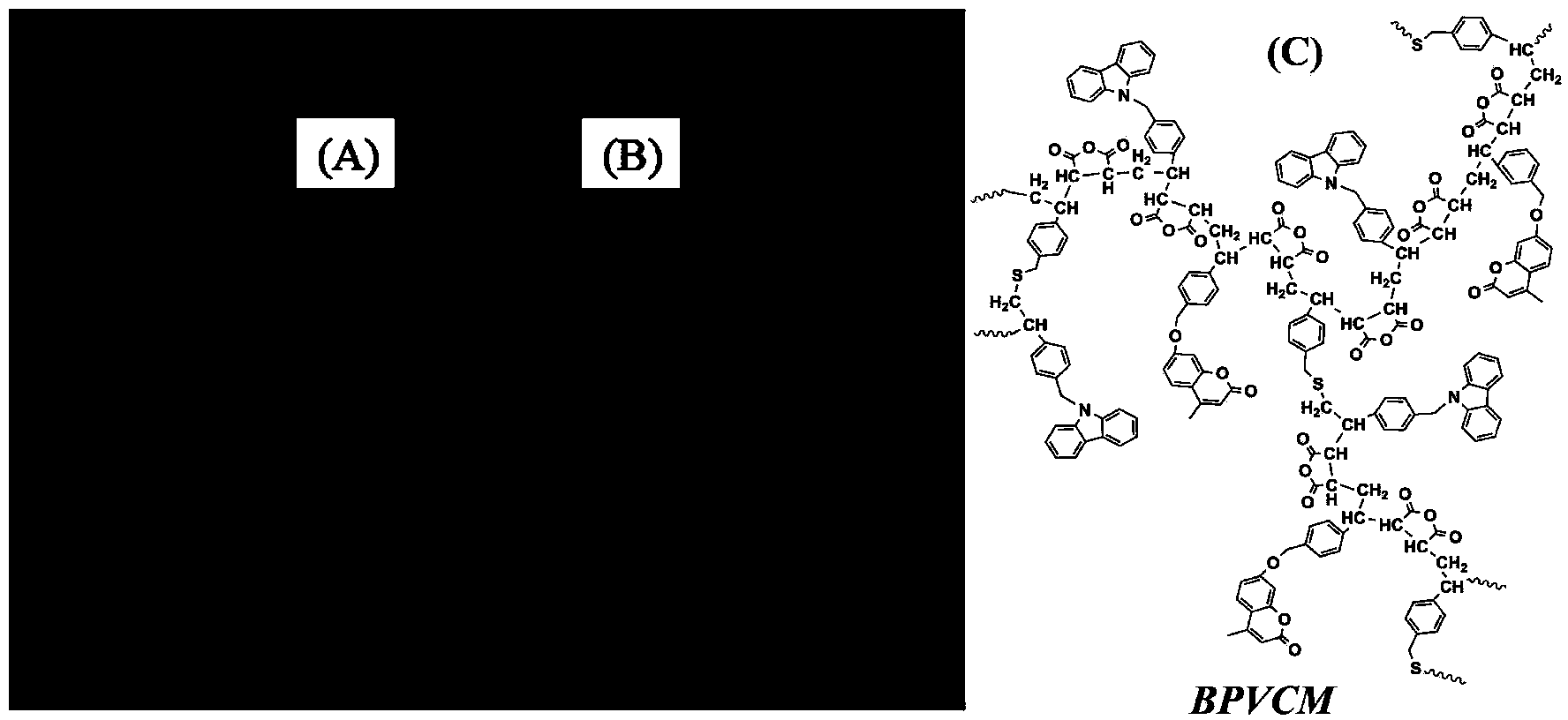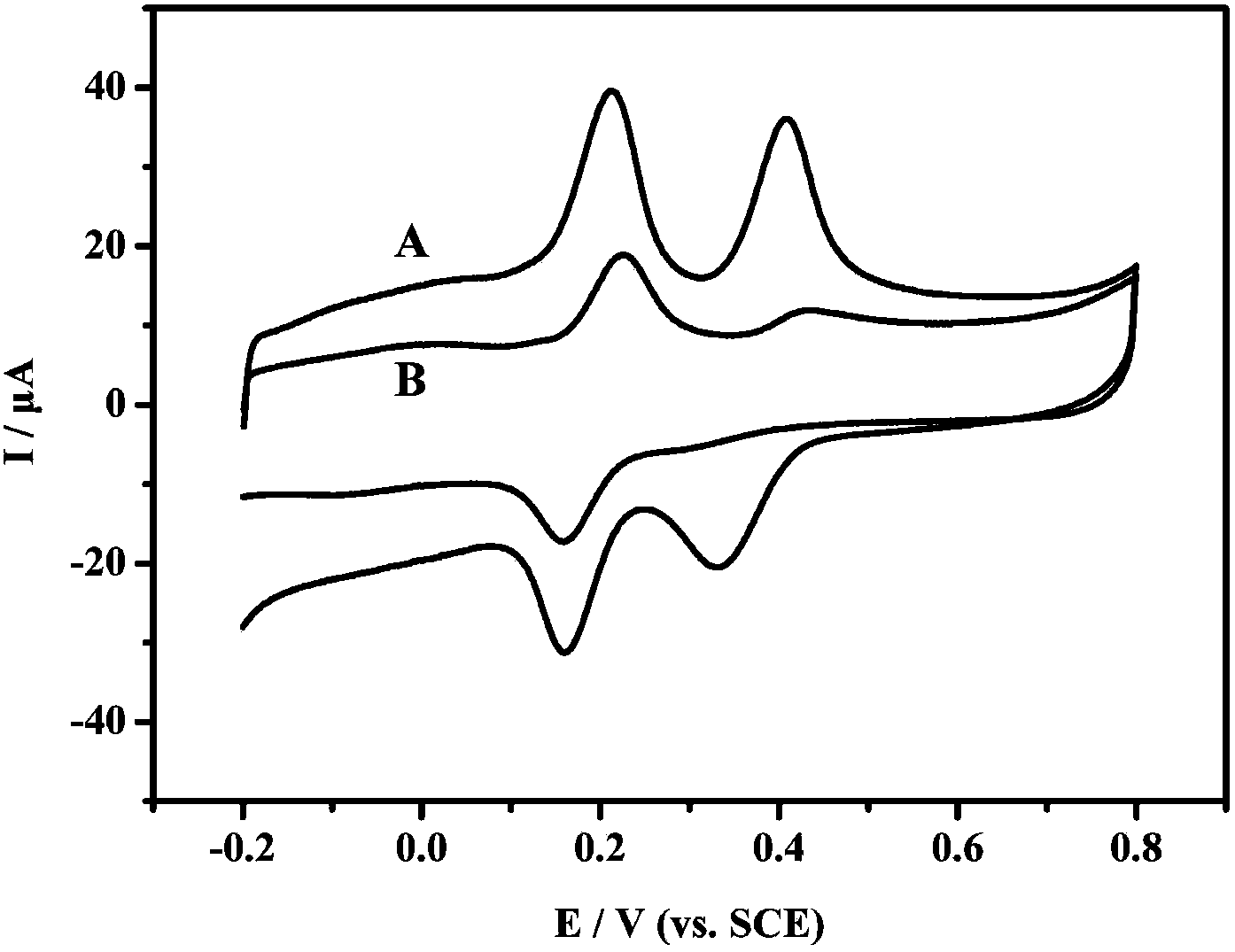Preparation of carbon nanotube composite material electrochemical sensor capable of detecting dopamine and paracetamol simultaneously
A technology of carbon nanotubes and composite materials, which is applied in the field of combining macromolecular self-assembly and electrochemical sensors, can solve the problems of carbon nanotube property destruction, destruction of carbon nanotube C-C structure, easy entanglement and agglomeration, etc. Effects of transmission performance, improved response rate, and improved stability
- Summary
- Abstract
- Description
- Claims
- Application Information
AI Technical Summary
Problems solved by technology
Method used
Image
Examples
Embodiment 1
[0020] 1. Add 1.46g (5mmol) 7-(4-vinylbenzyloxy)-4-methylcoumarin, 1.42g ( 5mmol) N-(4-vinylbenzyl)-9H-carbazole, 1.27g (13mmol) maleic anhydride, 0.069g (0.46mmol) 4-vinylbenzylmercaptan, 0.077g (0.469mmol) azobis Isobutyronitrile, dissolved in 40mL N,N-dimethylformamide polymerization solvent, heated the flask in a constant temperature oil bath, stirred until it was completely dissolved, fed nitrogen gas into the flask for 30min, raised the temperature to 65°C, and kept the temperature constant React for 24 hours, cool to normal temperature after the reaction is over, precipitate the reaction product in toluene, and obtain a white powdery solid by suction filtration. Chemically functionalized macromolecular products (BPVCM);
[0021] 2. Take 2 mg of the macromolecule synthesized in step 1 and dissolve it in 1 mL of N,N-dimethylformamide, then add 4 mg of carbon nanotubes and place it in a water bath for ultrasonication for 4 hours, and then use magnetic stirring to Add 9 m...
Embodiment 2
[0025] 1. With embodiment 1 step 1;
[0026] 2. Take 2 mg of the macromolecule synthesized in step 1 and dissolve it in 1 mL of N,N-dimethylformamide, then add 8 mg of carbon nanotubes and place it in a water bath for ultrasonication for 4 hours, and then use magnetic stirring to Add 9 mL of deionized water dropwise to the mixture at a rate of 6 μL per minute, and place the mixture in a dialysis bag for dialysis for 3 days to obtain a stable polymer / carbon nanotube dispersion; on a clean glassy carbon electrode Add 4 μL of the polymer / carbon nanotube mixture solution dropwise, irradiate with an ultraviolet lamp with a wavelength greater than 310nm for 10 minutes, and let it dry naturally to obtain a polymer / carbon nanotube composite material;
[0027] 3. With embodiment 1 step 3;
[0028] 4. Same as step 4 of embodiment 1.
PUM
 Login to View More
Login to View More Abstract
Description
Claims
Application Information
 Login to View More
Login to View More - R&D
- Intellectual Property
- Life Sciences
- Materials
- Tech Scout
- Unparalleled Data Quality
- Higher Quality Content
- 60% Fewer Hallucinations
Browse by: Latest US Patents, China's latest patents, Technical Efficacy Thesaurus, Application Domain, Technology Topic, Popular Technical Reports.
© 2025 PatSnap. All rights reserved.Legal|Privacy policy|Modern Slavery Act Transparency Statement|Sitemap|About US| Contact US: help@patsnap.com


